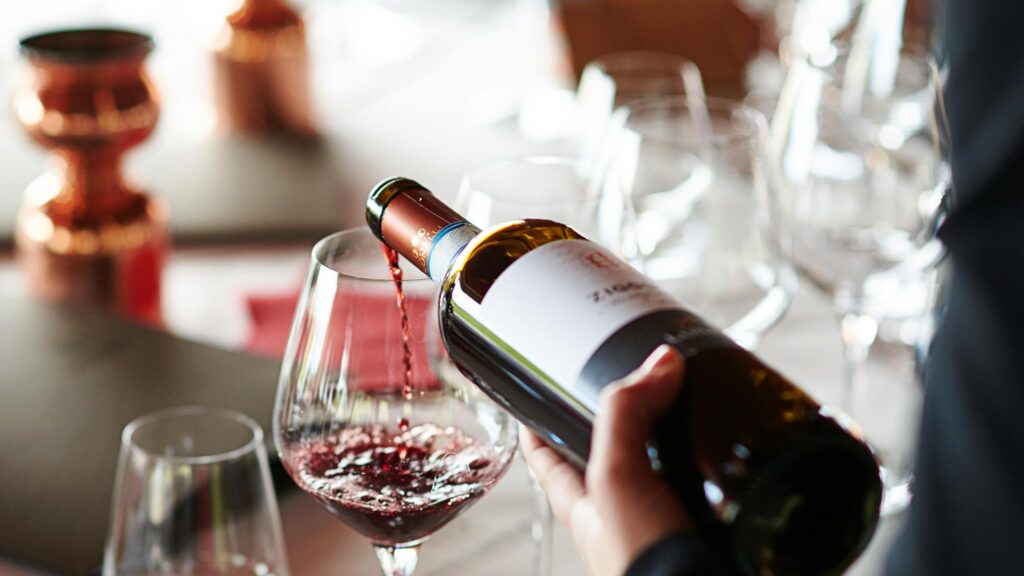
Top 8 Ways to Appear an experienced wine taster
After working in the wine and spirits sector for many years, I’ve identified a group of characteristics that the majority of wine experts have. Here are some tips to help you seem alcohol Ontario delivery like an expert while improving your sensory wine-tasting abilities.
1. Be Terminology-Aware
Need to know the distinction between Champagne and Chardonnay, a contemporary wine? Do our wine labels need to be clarified?
Learning about wine may seem like a lifelong endeavour with all those obscure château names and protracted Ontario delivery alcohol varietals. Go through some fundamental wine terms and descriptions to provide the groundwork for future conversational snuck-ins.
You like Rosé wine. Consider adding some fresh and fruity tastes to the dish. Are you fond of Cabernet Sauvignon? Use adjectives like full-bodied and earthy.
2. Rely on your senses
Wine tasting involves using the senses of sight, smell, and taste. The eyes should come first, followed by the nose, and then the mouth. To determine the colour of the wine, tilt your wine glass Ontario alcohol delivery at a 45-degree angle and hold it up to the light.
A significant characteristic that says a lot about the wine’s flavour is its colour. Yes, there are self-explanatory options for red, white, rosé, or sparkling wine, but there is more to it than that.
White wines, for instance, change from delicate light lemon and gold to amber or dark caramel as they mature. Conversely, red wines age differently, turning from purple to brick as they lose colour and strength.
3. Be sure to shake the glass.
Give the glass a gentle spin to help the wine absorb the oxygen. The wine will become softer throughout this process, and various fragrant components will be released into the glass.
When a wine is initially opened and poured, it may have an unpleasant aroma that briefly lingers. Sulphur alcohol delivery in Ontario dioxide and hydrogen sulphide are two typical consequences of using sulphur in winemaking. However, a thorough whirl rapidly eliminates these smells.
4. Recognize the value of palate cleaners.
If you’ve ever participated in a wine tasting, you know how crucial palette cleaners are. Wine experts and purchasers could be required to taste up to 100 wines daily, overstimulating their taste receptors.
Palate fatigue, a syndrome that makes it difficult to alcohol delivery Ontario distinguish between the subtleties and tastes of wines, is causing this. The optimal technique is to “reset” your palate before each taste trial by ingesting foods or drinks that negate the flavours.
To prevent flavour overlapping on the taste buds, the essential quality to seek in a palate cleanser, or intermezzo known in Europe, is that it presents a fresh, clean, and neutral flavour.
5. Explain the wine

Sweetness, acidity, and tannin are the three critical components of a wine’s flavour. Well-known tastes connected to the wine’s dryness include sweetness and acidity. Wine benefits from its acidity, but wine without acidity tastes “flabby.”
Tannin, generated from the plant’s skins, seeds, and stems, creates a dry mouth in the aftertaste. A surplus of tannin may also leave you with a bitter taste.
6. Keep a wine notebook or notes.
Wine drinking is a lot of fun since it allows for exploration. Finding your favourite wines is thrilling, especially when you genuinely enjoy a bottle. The most excellent way to better understand your tastes is to keep a list of the wines you want and don’t like.
Take out a notepad or the Notes app on your phone each time you open a bottle. Please list the winemaker, the wine’s name, price, flavour, scent, and even meal pairings since it’s all in the details. Keeping track of your wine purchases can help you identify the styles of wine you enjoy and point you in the right direction the next time you go shopping.
Trying many wines simultaneously is the most excellent method to discern between them and thoroughly enjoy their distinctive tastes and textures. In addition, it will be beneficial in teaching you how to read different wines.
7. Make inquiries
Make inquiries Specific individuals may recognize the names of famous wine regions and remarkable grape combinations. The majority won’t, though. Both are appropriate. Feel free to interrupt and request an explanation if the wine steward appears to be speaking in French while describing the vineyards, grape varieties, or flavours to look for.
Winemakers like talking about these subjects and usually overlook that only some people speak their language. If you want to study before your tasting, find out what the area is famous for. Because some grape varieties, like Chardonnay, are influenced by the soil they are grown, a Chardonnay produced in a region known for producing exceptional Chardonnay may stand out significantly. Everything you need to know should be accessible through a quick Google search.
8. Belief in oneself
Wine tasting ought to be a relaxing and joyful activity. However, the idea of becoming overly sensitive to the various sensations and fragrances of food and drink permeates wine culture. Therefore, despite the wide variety of sampling methods and manuals available, it is best to stick with what feels right.
Make sure to let those with extensive wine-tasting experience intimidate you. Even wine professionals see every opportunity to learn more and develop their talents as a chance to enjoy a bottle of wine.

